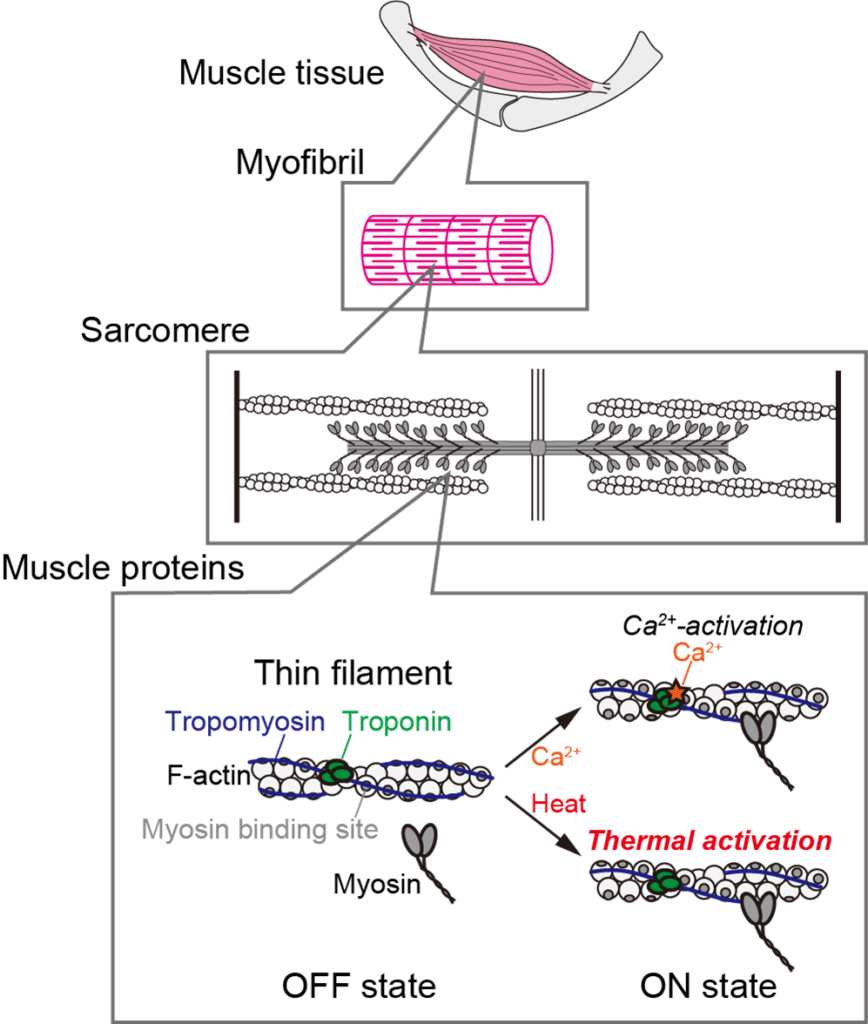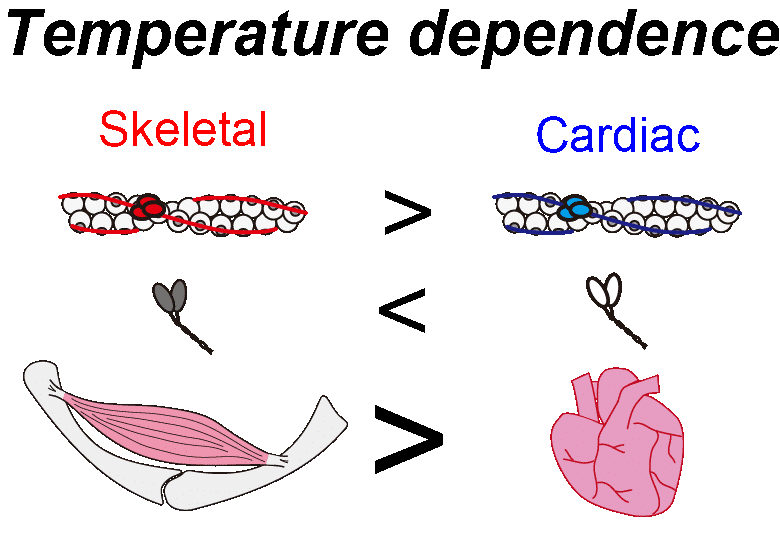In a recent study published in the Journal of General Physiology, a team of researchers from multiple institutions, including Osaka University, The Jikei University School of Medicine, and the National Institutes for Quantum Science and Technology, has unveiled the effects of heat on different muscle contractions. This research sheds light on the science behind warming up and its potential benefits for enhancing exercise performance.
Skeletal muscles contract when they receive electrical signals from the nervous system, triggering the activation of proteins in muscle cells that enable movement. The team has also investigated how temperature influences cardiac muscle contractions and found that our heart can efficiently contract within the body’s natural temperature range.
Next, the research team used muscle proteins and advanced microscopy to study how temperature impacts skeletal muscle. They wanted to find out if skeletal muscles have the same temperature sensitivity as the heart’s muscles.
Their findings showed that specific proteins in muscle cells act as temperature sensors, and heating affects skeletal and cardiac muscle contractions in distinct ways.
Co-lead author Kotaro Oyama said, “Our findings point to differences in the temperature sensitivity of proteins responsible for contraction in skeletal vs. cardiac muscles. The skeletal muscle that moves our body around is more sensitive to heating than the heart.”
These findings have important implications when considering how skeletal and cardiac muscles work differently. Skeletal muscles generate force as needed, while the heart must keep beating constantly.
Skeletal muscles are more sensitive to temperature, allowing them to contract quickly when warmed, even from light movement. This efficiency helps save energy when the muscles are at rest. On the other hand, the heart’s lower temperature sensitivity is essential for maintaining a steady heartbeat regardless of temperature changes.
This study reveals how warming up before exercise can boost muscle performance by affecting muscle proteins. The finding that specific muscle proteins act as temperature sensors might lead to new ways to enhance muscle function by warming up muscles. Introducing suitable warm-up exercises, especially for older individuals, could improve muscle and exercise performance, reduce the risk of injuries, and help maintain their independence.
There’s a hierarchical structure in muscles, and thin filaments must be activated. In both skeletal and heart muscles, when relaxed, there’s a low amount of calcium inside the muscle cells. The complex of tropomyosin and troponin keeps myosin (a molecular motor) from interacting with actin filaments (F-actin). This is called the ‘OFF state.’

When the calcium level inside the muscle cell goes up, or due to calcium signaling, calcium ions bind to troponin, which moves tropomyosin. This change in the shape of the thin filaments allows myosin to interact with actin, generating active force – this is the ‘ON state.
In a way, heat acts like a signal, switching the thin filaments to the ‘ON state,’ even without the need for calcium ions.

Warming up muscles can enhance performance by promoting the ON state and optimizing the interaction between myosin and actin. This knowledge opens the door to developing more effective warm-up routines for individuals, particularly older people, to improve muscle function and exercise performance. These warm-up strategies reduce the risk of injury and help maintain individuals’ independence and overall well-being.
Journal reference:
- Shuya Ishii, Kotaro Oyama, et al., Myosin and tropomyosin–troponin complementarily regulate thermal activation of muscles. Journal of General Physiology. DOI: 10.1085/jgp.202313414.
